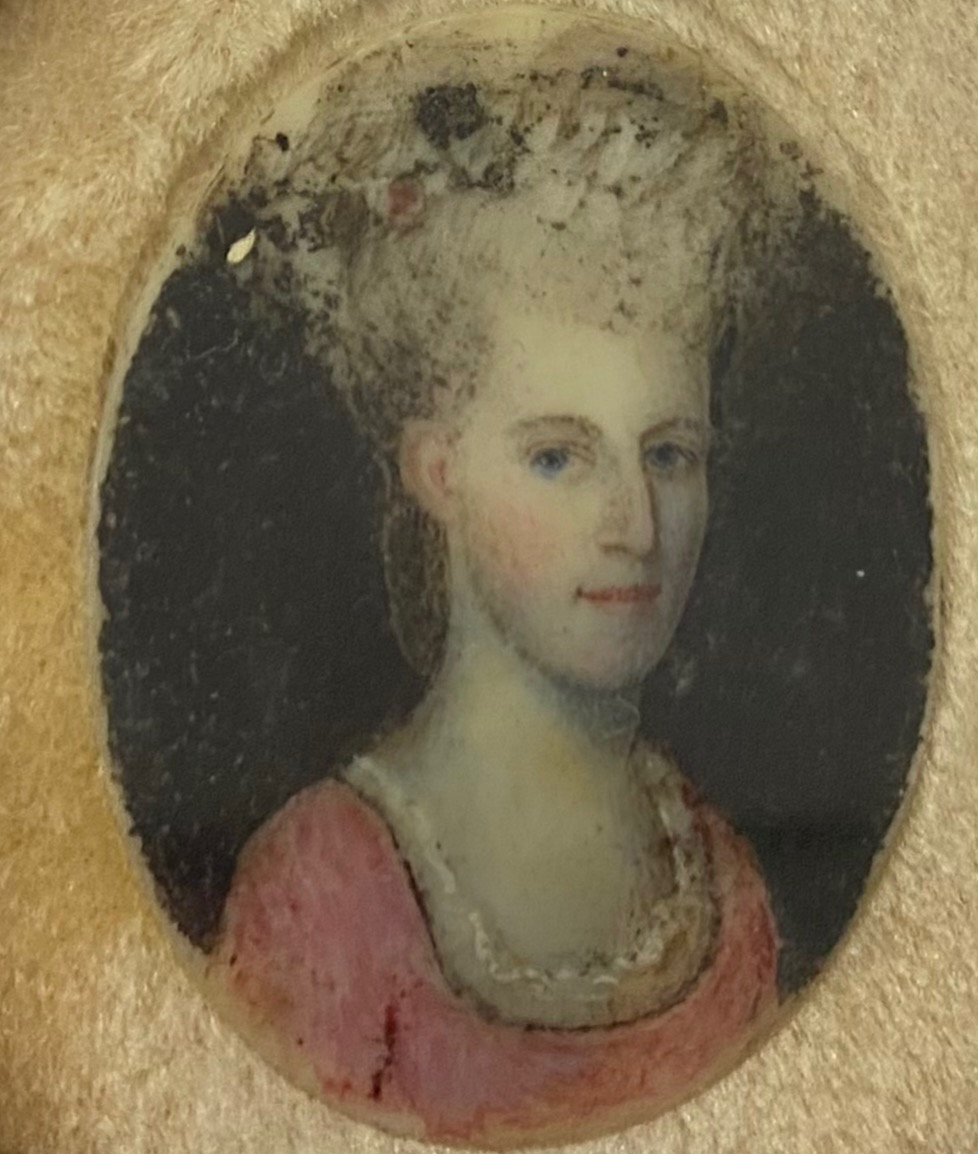Field Trip: Connecticut Museum of Culture and History and the Samuel Huntington Homestead Museum
- Maggie Meahl

- Jul 17, 2023
- 2 min read
Updated: Nov 10, 2023
Recently I had the chance to go down to Connecticut to do some more research at the newly-re-branded Connecticut Museum of Culture and History in Hartford (formerly The Connecticut Historical Society). As usual, they were very helpful there. CMCH has the Jedediah and Andrew Huntington Papers (and other items) that are essential to my research on this fascinating Connecticut family.
One of the items CMCH has in their collection is a very small miniature, in a colonial revival frame, of Mary Huntington Strong (1760-1840), the third of three daughters Jabez Huntington (1719-1786) and Hannah Williams Huntington (1726-1807) had (in addition to three sons). Jabez had also two sons, Jedediah and Andrew, with his first wife Elizabeth Backus Huntington (1721-1745).
Mary married the town minister, Joseph Strong, and lived in Norwich her whole life. Jabez built the Strongs a home near Huntington Corner at the time of their marriage in 1778.


Another item the museum has in its possession is a small personal journal of the New London ship captain and merchant: Joseph Coit (1698-1787). His daughter, Lucy (1746-1776), was Andrew Huntington's first wife.
Poor Lucy died in the summer of 1776 after a painful months-long death from what was then called consumption or "white plague" (tuberculosis). Other women in her family also died from TB. His journal chronicles his pain.


I moved on to Scotland, CT on Saturday to visit the Samuel Huntington Homestead Museum (SHHM). This home was his birthplace--as an adult, he moved to nearby Norwich. Samuel was a signer of the Declaration, a governor of Connecticut, and a president of the Continental Congress. I don't know much about him or his branch of the Huntington family. He was a great-grandson of Simon Huntington II (1629-1706).

Samuel and his wife, Martha Devotion Huntington, had no children of their own but raised a niece and nephew--that is how the story goes. Thus, despite the contrary, Samuel Huntington has no biological descendants. Samuel and Martha lived in Norwich across the street from Jabez and his sons.
Kevin Ring, head of the SHHM, and several of their board members were there for their Saturday lecture on the land the house sits on and how it was first used by Native Americans and then later, by colonial families such as the first English owners: Simon Huntington II and his sons.

The SHHM just had a new cedar-shake roof put on this summer right before all of the rain came! The museum plans other event this year such as a Revolutionary War encampment, a lecture on the architectural survey done, and a planned display on an enslaved woman who lived in the house.
What is unique about the SHHM is that the property is focused on the archaeology, architecture, and changes that were made to the house over the centuries. Many different families lived in this home up until 1994 when it was sold to the town I believe.
I got so busy talking to the people there for the lecture that I didn't get a chance to see all of the artifacts in the cases or hear the actual house tour spiel. I am hoping to return for the fall lecture on Black history in the area.












Hello, This is interesting--I am researching Samuel Huntington and his nephew, also named Samuel, who he raised. It is so difficult to keep the names straight. I read your blog on the sheer number of Hannahs and wanted to add that these two Huntington brothers (Samuel and Joseph married two Devotion sisters--Martha & Hannah Devotion -- and that is a primary reason why Martha raised Hannah's children) I am excited to read your other blogs! -Julie